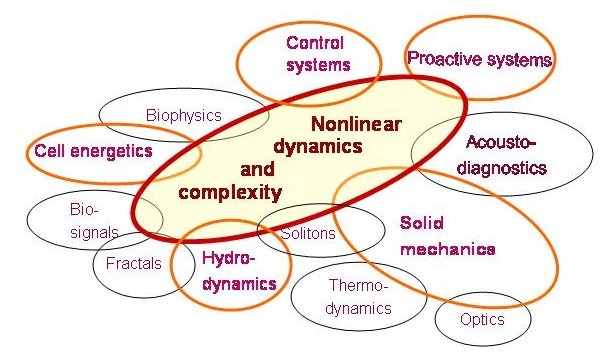The laboratory is focused on modelling nonlinear wave processes and advanced materials. Mathematical modelling is a unifying theme for the laboratory as it is a beneficial approach in gaining a better understanding of the underlying physical processes from different viewpoints and for performing in silico experiments.
The Laboratory of Solid Mechanics is composed of two research groups.
The head of the laboratory is prof. Andrus Salupere.
Nonlinear wave dynamics
Andrus Salupere (leader of the group),
Jüri Engelbrecht,
Arkadi Berezovski,
Dmitri Kartofelev,
Maria Miranda Vuin,
Päivo Simson,
Kert Tamm,
Tanel Peets,
Mart Ratas,
Martin Lints.
Rheology of composites
Heiko Hermann (leader of the group),
Oksana Goidyk,
Mark Heinštein.
A brief history overview:
Nonlinear studies in the Institute of Cybernetics have been carried on since the 1970s. In 80’s the research was focused on Solid Mechanics, in 90’s the research started to have another focal point – Nonlinear Dynamics. “Centre for Nonlinear Studies” or CENS for shortly – was founded in 1999 inside the frame of the Department of mechanics and applied mathematics of the Institute of Cybernetics at Tallinn University of Technology. Estonian Ministry of Education and Research included CENS into the list of Estonian Centres of Excellence in Research in 2002-2007 and for years 2011-2015 and the Laboratory of Solid Mechanics was involved in these projects as part of the NONLINEAR DYNAMICS AND COMPLEX SYSTEMS research group.

CENS was an interdisciplinary project where nonlinear dynamics was only one aspect. In CENS, characteristically, the attention was shifted from problems of solid mechanics to interdisciplinary problems where the stress field is one among the other fields. New qualities (at the time of CENS creation) of nonlinear science like solitons, fractals, interaction waves, chaos, etc. were taken into account. The basic continuum mechanics needed modification (nonlinearity, inhomogeneity, microstructure, internal variables, etc.), the methods of nonlinear dynamics were widely used and improved, the mathematical modelling of complex processes, in general, had been motivated by physical analysis, the methods for numerical simulation derived with needed accuracy. In other words, around nonlinear dynamics, the various scientific disciplines emerged with their own specific aims but kept the notion of nonlinearity and using the knowledge and methods of nonlinear dynamics. Like in CENS our current studies involve solids, fluids, biological tissues, signal processing, and differential equations.
